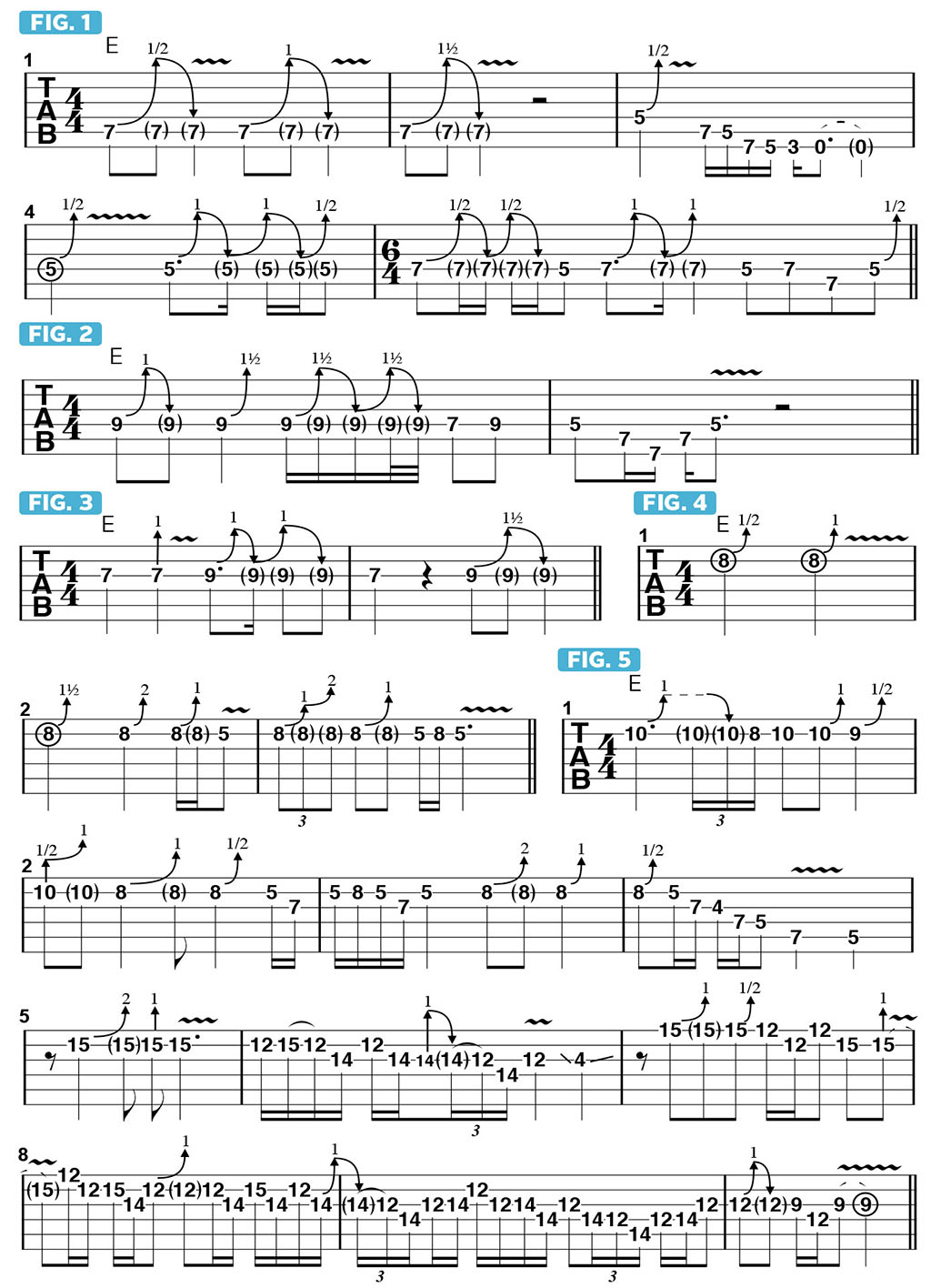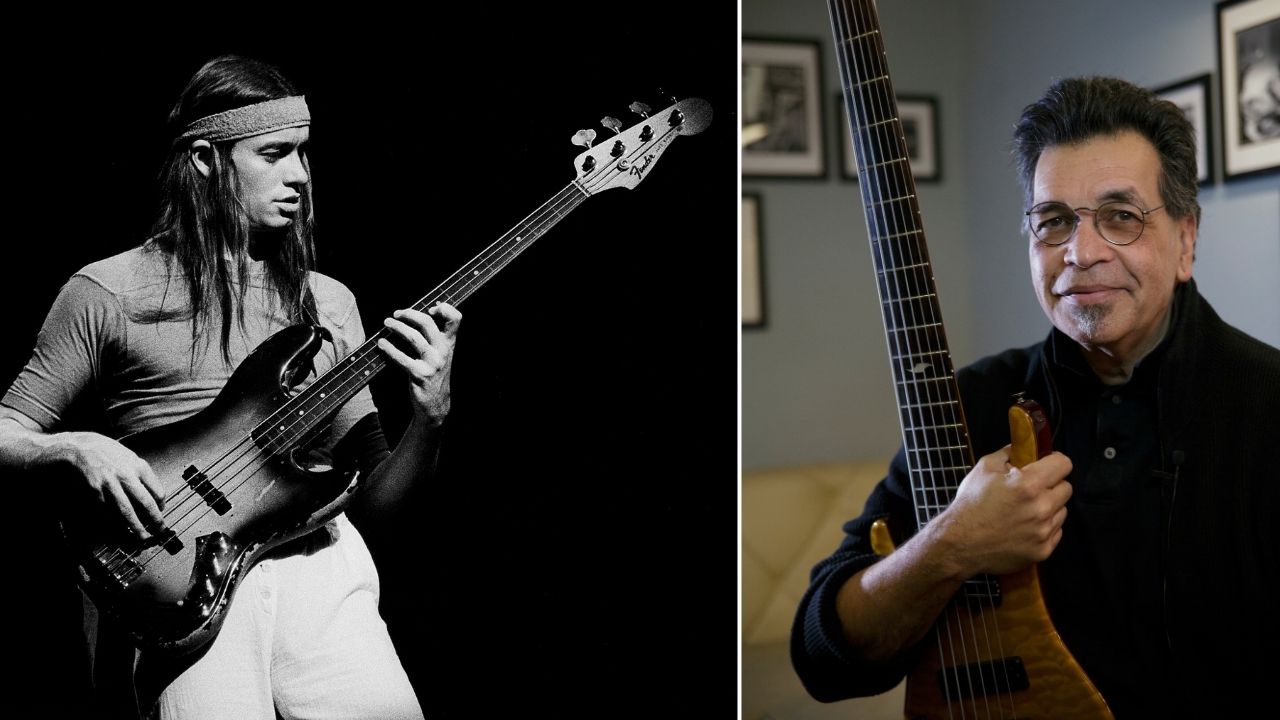Learn the secrets of the blues guitar masters with these essential string-bending techniques
String bending and vibrato are vital expressive tools for playing blues-rock
String bending and vibrato techniques provide essential expressiveness to all blues and blues-rock guitar solos. Techniques such as these allow one to emulate the sound of the human voice, which serves to broaden the emotional content and impact of the lines you play.
Legendary players like B.B. King, Albert King, Eric Clapton, Jimi Hendrix, Leslie West and Stevie Ray Vaughan all mastered string bending and vibrato techniques and made them integral elements of their signature playing styles.
Our point of focus in the last lesson was the E minor pentatonic scale (E, G, A, B, D), and we examined bending each note, starting with the open low E string, in differing increments from a half step to a whole step to one and a half steps and beyond.
FIGURE 1 picks up where we left off with string bends initiated from E, on the A string’s 7th fret, in bars 1 and 2. In bars 3 and 4, we move up to G on the D string’s 5th fret, and examine different sized bends, with vibrato added. In bar 5, we move up to A at the 7th fret on the D string and apply the same techniques.
In FIGURE 2, these bends are added to B at the 9th fret on the D string, and in FIGURE 3, bending techniques are applied to D on the G string’s 7th fret and E, at the 9th fret. In FIGURE 4, we move up to G, on B string's 8th fret, with licks demonstrated in the style of Albert King.
Continue moving up to each subsequent note in the E minor pentatonic scale, adding each increment of the bend, culminating at the D note at the 22nd fret on the high E string (if your guitar has 22 frets). Be sure to listen closely as you apply each bend to be sure your execution is precise and in tune.
Played over a heavy blues-rock backing track, FIGURE 5 is a 10-bar solo that includes half-step, whole-step and two-step bends, as well as finger vibratos. The solo begins with a whole-step bend and release on A on the B string’s 10th fret, followed by subtle half-step bends on G#, at the 9th fret, and G, at the 8th fret. At the end of bar 3, I perform bends of one and two whole steps, à la Albert King.
All the latest guitar news, interviews, lessons, reviews, deals and more, direct to your inbox!
In bar 5, the solo jumps up to 12th position with one- and two-steps bends on D, on the B string’s 15th fret. The lines remain in 12th position, with bends on the top three strings, through bar 9, and in bar 10, I move down to 9th position with a whole-step bend and release on G, at the 12th fret on the G string.
When bending, always be mindful to listen closely to your intonation - playing in tune. Control of string bending in this way will widen both your technical and creative palettes when crafting expressive and effective solos.
Guitar World Associate Editor Andy Aledort is recognized worldwide for his vast contributions to guitar instruction, via his many best-selling instructional DVDs, transcription books and online lessons.
Guitar World Associate Editor Andy Aledort is recognized worldwide for his vast contributions to guitar instruction, via his many best-selling instructional DVDs, transcription books and online lessons. Andy is a regular contributor to Guitar World and Truefire, and has toured with Dickey Betts of the Allman Brothers, as well as participating in several Jimi Hendrix Tribute Tours.


